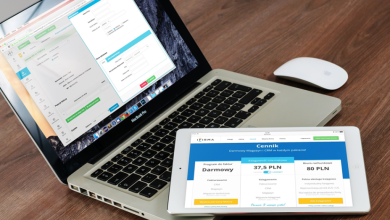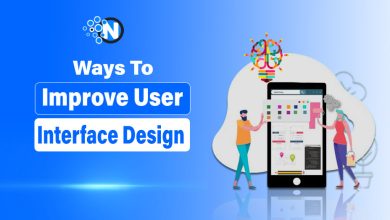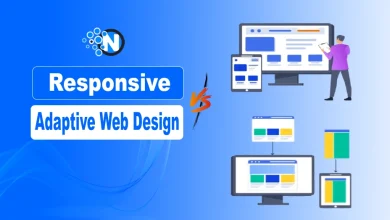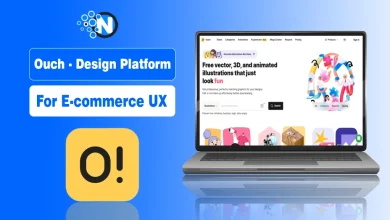Automatic Web Design Is Possible With Modern Website Builders
A couple of decades ago, creating a website was a complex and labor-intensive process. You had to know HTML, CSS, understand graphic design, and be able to set up hosting and domains.
Today, the situation has changed dramatically. Thanks to modern website builders, automatic web design has become not only possible but also accessible to everyone. Such tools allow you to create a full-fledged website in just a few hours, be it a blog, portfolio, online store, or corporate portal.
In this blog post, I will explain how automatic web design is possible with modern website builders and how it can transform web development tasks.
Let’s start!
What is Automated Web Design?
Automated web design is a process of creating a website in which most of the web design work is done with the help of built-in algorithms and templates.

The user only needs to select the structure, upload the content, and slightly adjust the appearance. This saves a lot of time, reduces the knowledge requirements, and makes web development accessible to a wide audience.
Among the most flexible and multifunctional tools, we can highlight Nicepage, a constructor that combines an intuitive interface with the ability to deeply customize visually.
💡Do you know?
-More than 18 million websites on the internet are built using DIY website builders.
-Over 24 million online stores are made using an e-commerce builder platform.
Source

Advantages of Modern Website Builders
Here are the top advantages of modern website builders:
1. User-Friendly Interfaces
Gone are the days of struggling with complex coding languages. AI website builders offer intuitive drag-and-drop interfaces that make customization easy. Even complete beginners can design professional websites with minimal effort.
2. Pre-Designed Templates
Most website builders come with pre-designed templates tailored for different industries, such as e-commerce, blogging, and corporate websites. Users simply select a template that suits their needs and personalize it.
3. Adaptive Design
The tools automatically adjust the site to different screens: smartphones, tablets, and laptops. You do not need to separately configure each version.
4. Automated Content Generation
Some advanced AI website builders can generate text content, images, and branding elements automatically, reducing the need for manual copywriting and graphic design.
5. AI-Assisted Branding
Many modern web design platforms offer brand identity creation tools, suggesting logos, color palettes, and typography options based on the user’s business type.
6. Built-In Marketing Features
Websites created using AI-driven platforms often come with SEO, email marketing, social media integration, and analytics tools, ensuring a complete online presence.
7. One-Click Publishing
Once users finalize their website design, they can publish their site instantly with just one click, making website creation incredibly efficient.
8. Integration with external services
Connecting analytics, CRM systems, feedback forms, chats, and social networks, all of this is implemented in a couple of clicks.
Nicepage stands out due to its library of professional templates created with modern trends in UX/UI design in mind.

Who is Automated Web Design Suitable For?
Wondering who can use website builders for automatic web design? It is suitable for:
- Entrepreneurs who need a website “here and now”, without large investments in development.
- Freelancers, designers, photographers, and copywriters who need a portfolio.
- Small businesses, cafes, studios, courses, and salons that need a simple online platform.
- Bloggers and influencers are striving for personal branding.
- Beginner web designers who want to learn the basics of interface design without diving deep into code.
What About Uniqueness?
Many people mistakenly believe that automated web design leads to monotonous and boring websites. This opinion is long outdated. Modern platforms allow you to fine-tune everything: from fonts and colors to animation and behavior of elements when scrolling.
In this sense, Nicepage wins over its competitors; it provides almost the same freedom as professional tools like Figma or Adobe XD, but does not require technical knowledge.
The Future of Web Design: Full Automation?
Today, platforms that use AI are easily available. Such systems can offer ready-made website layouts based on the entered information and user preferences. They themselves select colors, styles, blocks, and even texts. Automation tools are not a replacement for designers or other web professionals yet, but they can be an excellent start or inspiration for ideas.

I would like to say that automation is not an enemy of a designer, but it may be a good friend to reduce the work load. In the hands of a professional, such a tool only speeds up the routine: there is no need to re-layout identical blocks, look for icons, or align indents.
For those who want the most flexible platform with the ability to fully automate and manually configure, Nicepage is an excellent choice. It allows you to quickly assemble a landing page and fine-tune it to meet the unique requirements of the client.
What’s The Catch?
Automated web design is not a panacea. Some tasks, such as complex animations, integration with non-standard APIs, and development of unique interfaces, still require manual work. In addition, many platforms work on a subscription basis, and it is worth studying the payment terms in advance.
Note: If you are looking for a builder that combines power and simplicity, be sure to try Nicepage. This is one of the few tools that will suit both beginners and experienced designers who value visual freedom.
Key Factors to Consider When Choosing a Website Builder
Here’s a breakdown to help you make a smart, stress-free decision:
- Ease of Use: If you’re not a tech wizard, look for a builder with a drag-and-drop interface and intuitive controls. Platforms like Wix and Squarespace are known for their user-friendly design.
- Design Flexibility: Want your site to stand out? Choose a builder that offers customizable templates and design freedom. Some platforms lock you into rigid layouts, while others let your creativity run wild.
- Mobile Responsiveness: With most traffic coming from phones, your site must look great on all devices. Make sure the builder automatically optimizes for mobile.
- Pricing & Hidden Costs: Don’t just look at the monthly fee, also check what’s included. Some builders charge extra for features like custom domains, e-commerce tools, or removing ads.
- SEO & Performance: A good builder should help your site rank well on search engines. Look for built-in SEO tools, fast loading speeds, and clean code.
- E-Commerce Capabilities: If you’re planning to sell online, make sure the builder provide ecommerce features like product listings, payment gateways, and inventory management.
- Customer Support: When things go sideways (and they will), responsive support is a lifesaver. Look for platforms with live chat, email, or phone support, not just a chatbot and a FAQ page.
Summing Up
The world of web development is changing rapidly. What recently required a team of specialists can now be implemented independently in an evening. Automatic web design is a step towards the democratization of the digital space. It gives everyone, from entrepreneurs to students, the opportunity to declare themselves online. Although such platforms will not replace manual development in complex projects, they become the optimal solution for most tasks.




